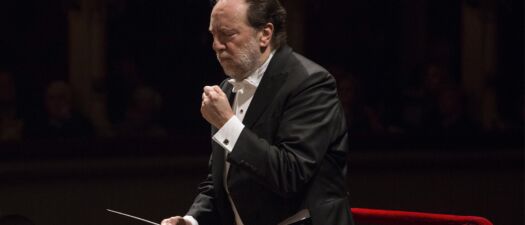
That’s how an orchestra knows what a conductor means!
Ever since its opening in 1992, the largest and most renowned orchestras and conductors have found their way to Muziekgebouw Eindhoven. This is partly due to the fact that the acoustics in the concert halls are perfect for both the audience and the musicians. This is an important factor in delivering a magnificent concert, but the conductor also plays a crucial role in how the orchestra performs, it is at least as important as how well the orchestra members play their instruments!
An orchestra can be easily compared to an Olympic rowing team. The orchestra members are the rowers, and each of them has mastered the technique necessary to win the gold medal. However: if every rower decides to follow their own plan after the starting shot, it will be difficult to even get the boat across the finish line. That is why a coxswain is so important: someone who doesn’t row themselves, but who dictates the direction and the rhythm from the stern of the boat. This ensures the boat steers directly towards the finish line and everyone rows exactly when they should. In a sense, a conductor does nothing different for the orchestra.
Baton
The most important tool for the conductor is the baton, the stick with which they wave back and forth. It serves as an extension of the arm, making the conductor’s movements easier for all the orchestra members to see. This is why most batons are also light in colour; it offers a good contrast against the black suits often worn by conductors and orchestra members.
However, it hasn’t always been a subtle and elegant stick. In the 17th century, when Baroque music was in its prime, the conductor often used a large, heavy staff to stamp out the rhythm on a wooden floor. It was audible and visible, but also rather clumsy. And clumsy it certainly was, as proven by the story of the composer Jean-Baptiste Lully. When he was conducting a piece in honour of the King in 1687, he accidentally stamped hard on his own toe. The wound became infected, but Lully refused an amputation. He is thus highly likely to be the first and, simultaneously, the last person to die as a result of conducting.
Tempo
But how exactly is a baton used? A conductor doesn’t just wave their arms about. The right arm indicates the rhythm. For a common time signature (4/4), for example, the rhythm looks like this: the baton moving downwards signifies the first beat. The conductor then moves to the left for the second beat, and then to the right for the third beat. Finally, the baton returns to the point at the top for the fourth beat. This repeats for the duration of the piece. If the orchestra is playing in a different rhythm (time signature), the movements will naturally change too.
The faster the conductor makes these movements, the faster the piece will be played. However, it doesn’t just indicate the tempo, but also the style of playing. If the conductor moves their baton smoothly and elegantly, the orchestra will play the notes beautifully joined up (legato). Short, jerky movements? Then the music will sound staccato. And likewise, the size of the movements influences the performance. If the conductor makes large gestures, the orchestra will play loudly and majestically, whereas small gestures will make the music whisper-soft.
The left hand reinforces the atmosphere the conductor wishes to achieve, but it is also used to indicate entries. For instance, by showing when an orchestra member should start playing. Conversely, the conductor can use the left hand to adjust things, for example, signalling the trumpets to play a little softer. In short: the right hand keeps beating the rhythm, and the left hand is free for all other instructions.
Practice makes the master
Naturally, it’s not only the conductor’s movements that ensure an orchestra can perform brilliantly during a concert. Most of the work actually takes place in the period leading up to the performance. During rehearsals, the conductor clearly explains precisely how they want the piece to sound. This means that during the final concert, the orchestra only requires a small cue from the conductor. You could therefore say that the success of an orchestra is also partly dependent on the musical choices the conductor makes. One thing is certain: the conductors who take to the rostrum at Muziekgebouw Eindhoven certainly know their stuff!
This season, Muziekgebouw Eindhoven will once again host world-renowned orchestras and conductors, including:
- Sun 1 Feb ’26: Le Concert Spirituel with Hervé Niquet
- Sun 8 Feb ’26: Prague Radio Symphony Orchestra with Alevtina Ioffe
- Thu 19 Mar ’26: Orchestra Filarmonica della Scala with Riccardo Chailly
- Sun 26 Apr ’26: Antwerp Symphony Orchestra with Jaap van Zweden
- Fri 8 May ’26: Academy of St Martin in the Fields
Furthermore, on Sunday 21st December, a brand new season of the popular programme Maestro (AVROTROS) will commence. In this show, several well-known Dutch celebrities take on the challenge of conducting an orchestra. They do this under the watchful eye of an expert panel, two members of which can be seen at Muziekgebouw Eindhoven this season:
- Sun 25 Jan ’26: Isabelle van Keulen Ensemble
- Fri 6 Mar ’26: Dominic Seldis